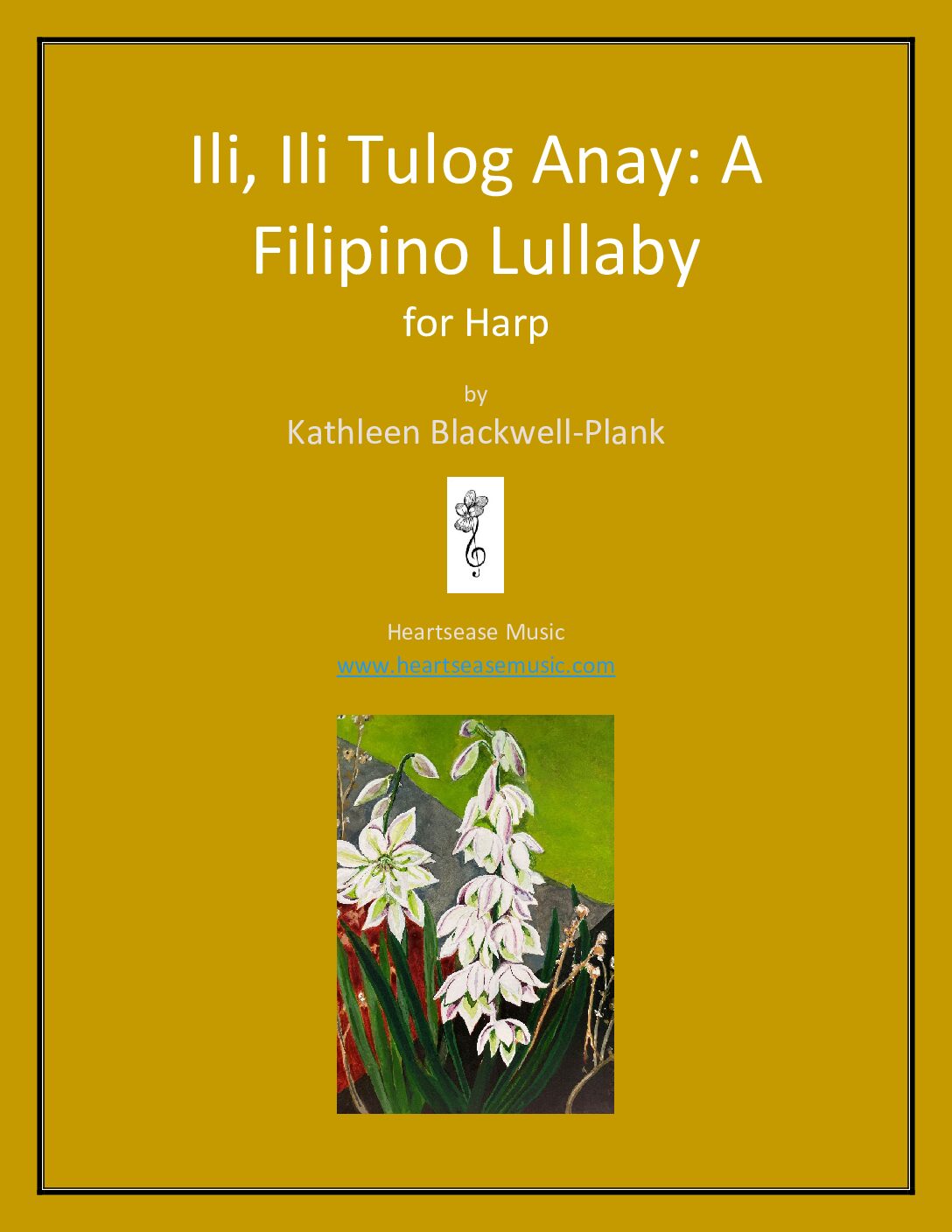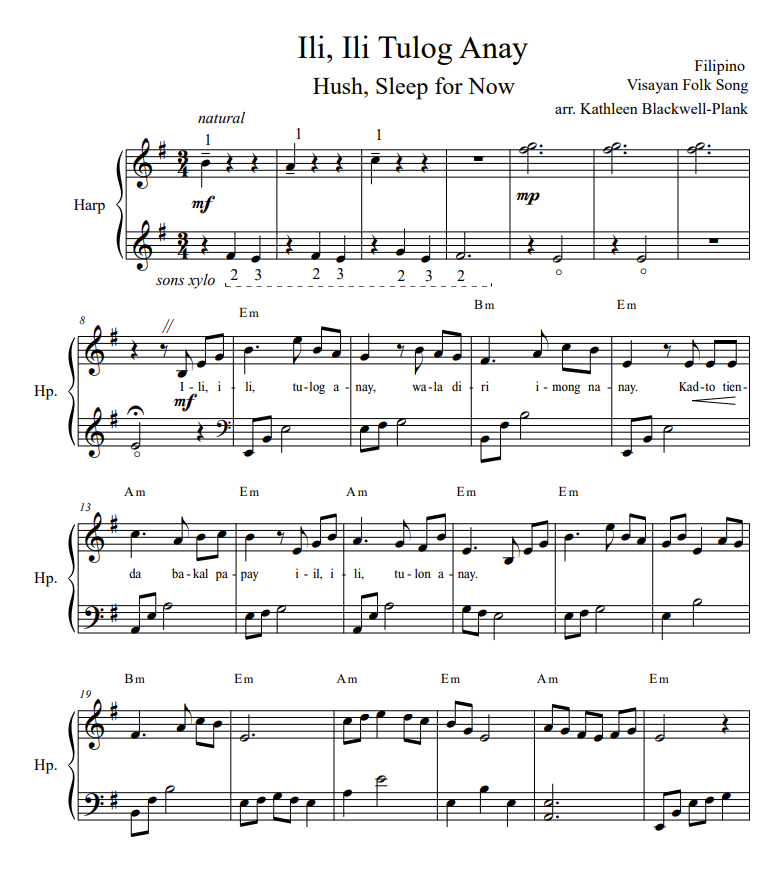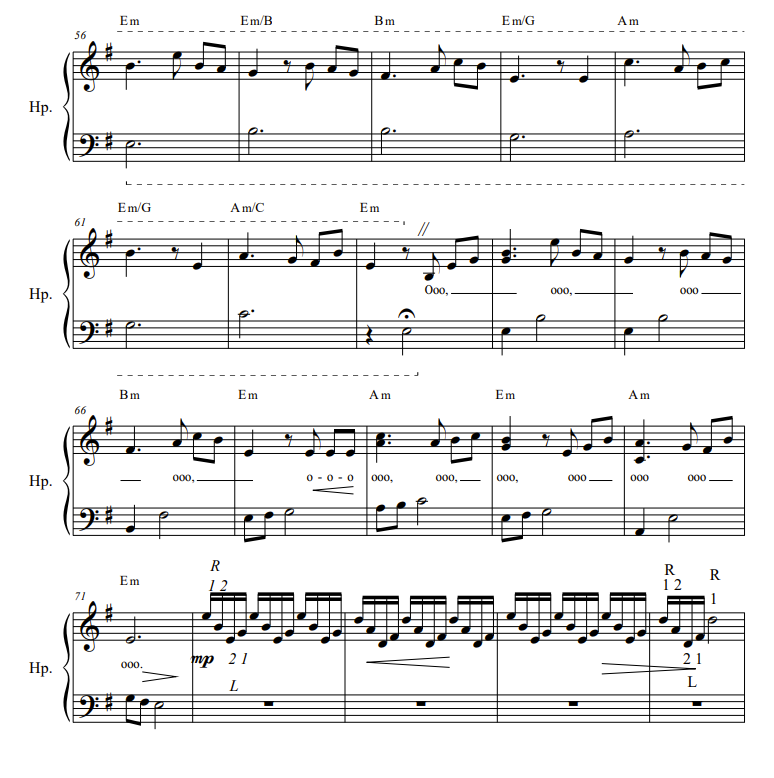Ili, Ili Tulog Anay
$5.00
Scroll down to listen.
Kathleen Blackwell-Plank’s arrangement of the traditional Filipino lullaby “Ili, Ili Tulog Anay” (“Hush, Sleep for Now”) is for solo lever or pedal harp. Words and chord symbols are provided for optional accompaniment. Scroll down for notes from the arranger.
This piece is available as a PDF download for $5.00.
Pages to print: 8 pgs.
Duration: 5:00









Reviews
There are no reviews yet.